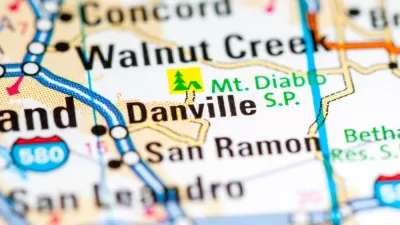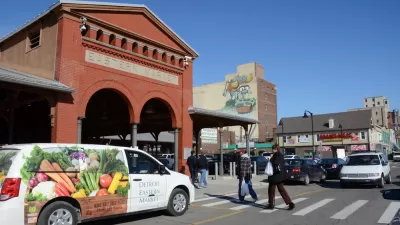Following the success of Planning to Grow Akron, spurring the development of thousands of housing units in the previously stagnant city, Planning to Grow Akron 2.0 will leverage federal stimulus funds to further stabilize the city's housing market.

Akron Mayor Dan Horrigan announced a new housing strategy, called Planning to Grow Akron 2.0, this week, reports Doug Livingston.
"Planning to Grow Akron 2.0 — an update on the first version from 2017 — promises a lot: better housing code enforcement, stiffer fines for absentee landlords, smoother zoning and permitting processes, a landlord-tenant council, a comprehensive strategy for homelessness by 2022, and a ranking by condition of all 84,000 residential structures in the city."
"Central to the plan, though, is a commitment to revitalize housing in what post-industrial, Midwestern cities like Akron are calling 'middle neighborhoods,'" adds Livingston.
Mayor Horrigan is proposing an expenditure of $20 million, a portion of the $153 million awarded the city through the American Rescue Act, to go toward housing in the city.
According to the article, the Planning to Grow Akron 2.0 plan is the second major housing initiative proposed by Mayor Horrigan. The first Planning to Grow Akron plan "exempted property taxes for new residential construction anywhere in the city for 15 years. Developers have since pounced on these residential tax abatements, which couldn’t be more aggressively structured under Ohio law."
According to an analysis included in this week's updated housing strategy, the effect of the first Planning to Grow Akron plan has been tremendous: "Before Horrigan took office, Akron was averaging less than 20 new home permits a year. There are now 1,800 housing units being planned, under construction or completed."
FULL STORY: Updated housing strategy goes after bad landlords, focuses on struggling neighborhoods

Study: Maui’s Plan to Convert Vacation Rentals to Long-Term Housing Could Cause Nearly $1 Billion Economic Loss
The plan would reduce visitor accommodation by 25,% resulting in 1,900 jobs lost.

North Texas Transit Leaders Tout Benefits of TOD for Growing Region
At a summit focused on transit-oriented development, policymakers discussed how North Texas’ expanded light rail system can serve as a tool for economic growth.

Why Should We Subsidize Public Transportation?
Many public transit agencies face financial stress due to rising costs, declining fare revenue, and declining subsidies. Transit advocates must provide a strong business case for increasing public transit funding.

How Community Science Connects People, Parks, and Biodiversity
Community science engages people of all backgrounds in documenting local biodiversity, strengthening connections to nature, and contributing to global efforts like the City Nature Challenge to build a more inclusive and resilient future.

Alabama: Trump Terminates Settlements for Black Communities Harmed By Raw Sewage
Trump deemed the landmark civil rights agreement “illegal DEI and environmental justice policy.”

Dear Tesla Driver: “It’s not You, It’s Him.”
Amidst a booming bumper sticker industry, one writer offers solace to those asking, “Does this car make me look fascist?”
Urban Design for Planners 1: Software Tools
This six-course series explores essential urban design concepts using open source software and equips planners with the tools they need to participate fully in the urban design process.
Planning for Universal Design
Learn the tools for implementing Universal Design in planning regulations.
City of Santa Clarita
Ascent Environmental
Institute for Housing and Urban Development Studies (IHS)
City of Grandview
Harvard GSD Executive Education
Toledo-Lucas County Plan Commissions
Salt Lake City
NYU Wagner Graduate School of Public Service





























